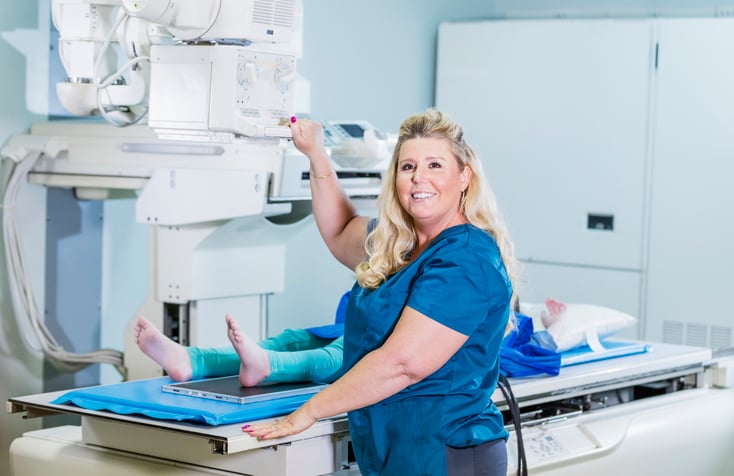
Leading Aphasia Treatments: 7 Speech Therapy Ideas
Approximately two million Americans live with aphasia, and 180,000 acquire the language disorder each year. It’s a frustrating condition where patients retain their intellect but are unable to process language as they should and have normal conversations.
The most common cause of aphasia is stroke, but it can also result from a head injury, brain tumor, or other neurological causes.
Regardless of the cause, speech therapy for aphasia can make a huge difference in a patient’s life, and the following list represents some of the most successful aphasia treatments and therapies that speech-language pathologists (SLPs) have at their disposal.
7 top speech therapy ideas to treat aphasia:
1. Individualized care plans
Speech-language pathologists should tailor the plan of care to each aphasia patient and his or her goals.
“We customize to the individual patient’s needs,” said Susan Wortman-Jutt, MS, CCC-SLP, an advanced clinician at Burke Rehabilitation Hospital in White Plains, New York. “There is no one therapy that works for everybody.”
Some patients may need to work on comprehension, while others need help with word finding. She said most people have mixed aphasia. She encourages SLPs to address patients in a normal tone of voice and let them set the priorities. 2. Aphasia therapy with a dual focus
Speech therapy activities now focus on both rehab and compensatory strategies, so patients can still communicate.
“You can start with compensatory from day one,” Wortman-Just said.
Treatment for aphasia is a two-pronged approach: stimulating the part of the brain involved with language and cognition, and giving the patient strategies they can use now to help them feel less frustrated with their communication.
“What we’ve learned is working on compensatory has a remedial effect,” added Rebecca Epperly, MS, CCC-SLP, clinical director and instructor of communication sciences and disorders at Radford University in Radford, Virginia.
3. Language action therapy
Formerly called constraint-induced therapy, intensive language action therapy forces the person with aphasia to use the affected language, typically verbalizing, and does not rely on compensatory tools. The patient may practice sounding out words and using those words in short sentences.
“He gets a lot of repetition with naming the word,” Kristen Mascareñas, MA, CCC-SLP, aphasia program coordinator at Craig Hospital in Denver.
4. Intensive therapy
A newer speech therapy idea for aphasia treatment involves intensive programs, such as the one at Craig Hospital. Speech therapy activities take place five days a week for multiple hours a day, for several weeks in a row.
“Research has shown that intensive therapy has more positive outcomes, even for individuals who have had aphasia for a long time,” Mascareñas said. Craig Hospital offers three-hour sessions for three weeks.
Epperly explained that the more a person communicates after a stroke, the better the outcomes.
“It makes excellent sense to do intensive programs,” Epperly said. “But we don’t know if they have long-lasting effects. [Patients] need lifelong follow-up.”
5. Life-participation programs
Intensive community programs with a life-participation approach represent another recent speech therapy idea, such as the Snyder Center for Aphasia Life Enhancement in Baltimore. Participants tend to return to church and other former activities, said Denise McCall, MA, CCC-SLP, director of the Snyder Center.
“It’s like a wellness center,” McCall said. “They get a lot better.”
Participants model for one another what works, and aphasia patients adjust to their disability while still working on reading, writing, speaking, comprehending and socializing by taking the classes of interest to them.
These programs help people adjust to their disability, and they make friends. McCall also has reached out to businesses to incorporate aphasia-friendly materials in their locations and to train staff on how they can communicate with affected people.
The Stroke Comeback Center (SCC) in Vienna, Virginia, serves a similar need. It runs 45 communication groups weekly and sponsors outings to ballgames and movies, as well as caregiver support.
“They feel comfortable and have a peer group and become more confident to do it on their own,” said Darlene Williamson, MA, CCC-SLP, executive director of SCC, and president of the National Aphasia Association.
6. Technology apps for aphasia
Computer programs and apps can supplement speech-language therapy for aphasia patients. Some telephone and tablet apps offer aphasia exercises, so patients can practice saying words.
Williamson considers technology “one of the best things that has happened to people with aphasia.” She explained a comfort level exists with mobile devices.
However, “the motivation for using technology must come from the patient and not the caregiver,” Wortman-Jutt cautioned. “You have to be careful of any [apps] that make claims that sound too good to be true.”

The apps are primarily stimulation exercises. Some web-based programs can adjust the difficulty depending on the person’s responses. Epperly suggested that patients do better when the practice is facilitated, so they do not continually make mistakes.
Words with Friends and English as a Second Language apps can be helpful for people with aphasia. Images can help the person communicate desires or thoughts, while iPads and other devices provide speech recognition options and can convert writing to speech.
"Technology has opened up the world of rehab for people with aphasia,” Williamson said.
7. Supported conversation
One of the speech therapy activities that SLPs can teach family members is how to use supported conversation, such as closed-ended questions, to communicate with the patient. Families should maintain face-to-face contact and give the person with aphasia time to speak.
Williamson also encourages fellow SLPs to engage in conversations, so the patient can participate. “When they see they are participating, it’s motivating and they feel more normal.” Wortman-Jutt said.
Aphasia therapy resources and apps, for SLPs and their patients:
- National Aphasia Association
- Alliance of Life Participation Providers
- Aphasia Recovery Connection
- Aphasia Toolbox
- Bungalow Software
- Constant Therapy, a subscription app
- Tactus Therapy Solutions
- Lingraphica, which also offers communication boards
- Proloquo2go, an alternative communication tool
Additional Allied Travel Resources
While you continue your search for the perfect allied healthcare position, AMN Healthcare provides great resources to keep your career moving in the right direction. Begin the application process now, and then learn more about how AMN Healthcare can help you keep your career on the move.
- EAP: Our allied travelers gain access to a valuable set of Employee Assistance Program benefits.
- Allied Travel Jobs by Specialty: Explore allied jobs and learn about hourly salaries and the benefits of working in travel jobs.
- Search All Allied Jobs: Uncover new possibilities in your allied career by exploring both short and long-term options.
- Allied Healthcare Jobs: Learn how we can help move your career in amazing directions, both professionally and geographically by exploring opportunities by each state.
- More Allied Resources: Use the content here to learn everything you need to know about our allied recruitment process, including information on salary and benefits.
Latest News
SLP Month Spotlight: Meet Claudia B.
Celebrate National Speech-Language-Hearing Month by meeting Claudia B., an inspiring SLP who is improving lives. Explore SLP career growth with AMN Healthcare.
Work Hard, Scan Harder: Side Hustles for Imaging Pros
Discover top side hustles for imaging professionals, including teleradiology, teaching, and freelance writing. Earn extra income while growing your skills.
Echo, OB, Vascular: Which Sonography Specialty Pays the Most?
Compare pay in echo, OB, and vascular sonography. Find out which specialty suits you best and discover top sonography jobs with AMN Healthcare.
Which Imaging Modality Should You Specialize In? A Guide for New Techs
Explore job growth, salaries, and pros & cons of CT, MRI, Sonography & X-Ray. Find the best imaging career path for radiologic technologists today.
Top 5 CT Tech Certifications for Career Growth
Boost your career with these top CT tech certifications. Learn what’s essential for higher-paying CT tech jobs and how to stand out in the field.
SLP Month Spotlight: Meet Kaitlyn C.
Celebrate SLP Month with Kaitlyn C., an inspiring travel SLP blending patient care with adventure. Learn more about her story and SLP careers with AMN Healthcare.
Celebrating Speech-Language-Hearing Month 2025
Celebrate Speech-Language-Hearing Month with resources, tools & travel therapy jobs from AMN Healthcare. Empower communication & advance your career!
6 Surprising Places OTs Work Outside the Clinic
Discover 6 unique OT job settings beyond the clinic, from schools to rehab tech. Explore non-clinical occupational therapy career options with us today!










